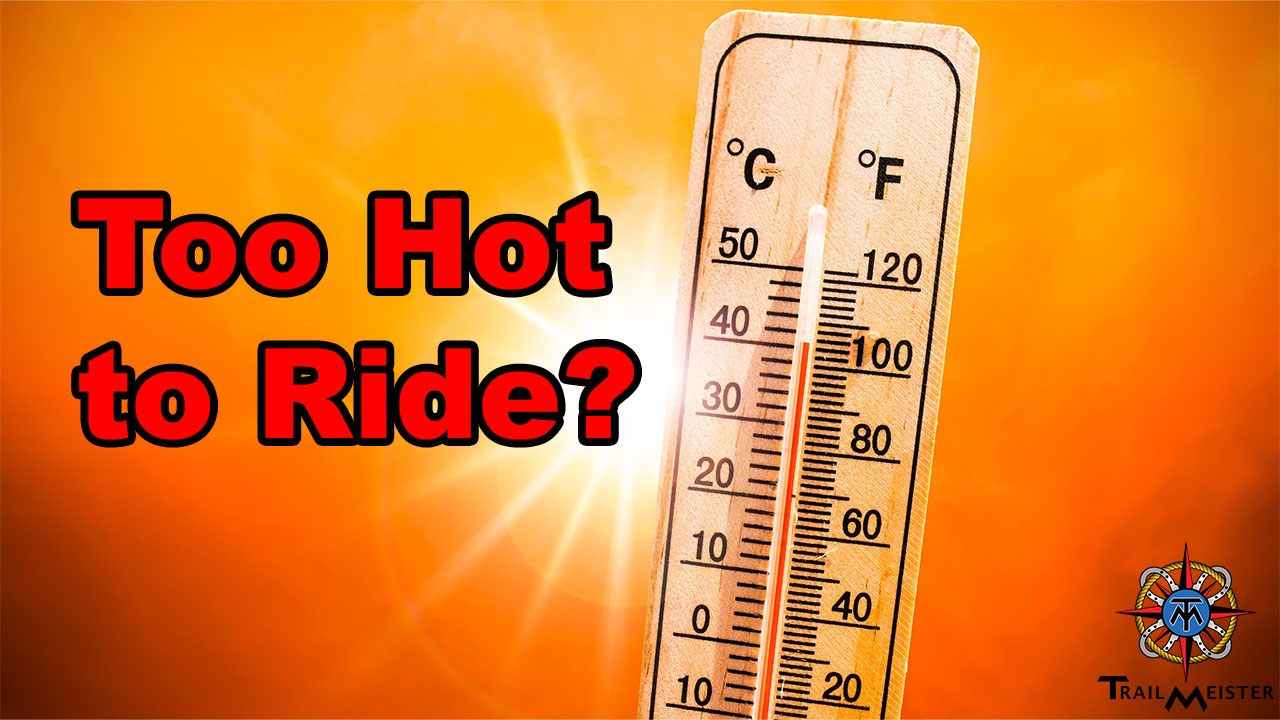It’s going to be warm today. A temperature of 92 degrees, 89% humidity, and a dew point of 68 degrees. We’re in for a hot and sticky day. Tomorrow will be worse. It’s summer in the Midwest.
Summer is a great season. The long hours of daylight are perfect for enjoying long rides. However, it’s important to be aware of the potential dangers associated with riding in hot weather. Heat stress, exhaustion, and stroke are serious risks that can affect horses, mules, and us! If not identified and managed properly, these maladies can be debilitating or life-threatening.
Understanding Heat Stress
The hallmark of summer is its heat and humidity. These conditions can significantly impact the health and performance of your horse. A simple and effective method to gauge whether environmental conditions are likely to cause heat-related illnesses is the Effective Temperature or Heat Stress Index test. This test involves adding the ambient temperature (in degrees Fahrenheit) to the relative humidity. Veterinary professionals recommend caution when this combined figure is around 150. If it approaches 180, it’s advised to postpone most riding activities that involve long or intense exercise to prevent dangerous heat build-up.
Importance of Conditioning
The adage “An ounce of prevention is worth a pound of cure,” attributed to Benjamin Franklin, is particularly relevant for horse owners. Preventing heat-related issues is largely about proper conditioning. Preparing your horse through the winter and spring will help it adapt more easily to summer’s higher temperatures and increased physical demands.
You may not know (I certainly didn’t!) that only about 25% of the energy used by a horse’s working muscles is converted into movement. The remaining 75% is lost as waste heat, which becomes particularly challenging for the horse to disperse in hot and humid conditions. A conditioning program will make your horse more efficient at dissipating this excess heat.
Sweating and Electrolyte Management
Horses and humans primarily lose excess heat through sweating. However, out-of-shape horses tend to sweat a foamy lather that doesn’t evaporate easily, reducing its cooling effect. Overweight horses face additional challenges due to their thick fat layer that traps heat, making it even harder for them to cool down.
As a horse becomes fitter, it places less demand on its working muscles. This results in less exertion, meaning less heat generated by the muscles, which in turn means less sweating and reduced fluid and electrolyte loss. A fit horse’s body becomes better at conserving and utilizing electrolytes and minerals, altering the sweat’s consistency. The sweat becomes thinner and evaporates more easily, thereby cooling the horse more effectively.
Impact of Breed on Heat Retention
The breed of horse also plays a significant role in heat retention. Heavily muscled breeds, such as Quarter Horses, have a greater challenge in dissipating internal body heat compared to lighter breeds like Arabians. This is due to their larger muscle mass, which generates more heat during physical activity.
Recognizing Heat Stress
Common sense and a sensible conditioning schedule are key to preventing heat-related issues. It’s essential to recognize the warning signs of heat stress in horses, which include heavy breathing, rapid heart rate, lethargy, excessive sweating, and a high body temperature. If any of these signs are present, it’s crucial to take immediate action to cool the horse down. This can involve moving the horse to a shaded area, providing cool water, and using fans or water to help lower its body temperature.
Practical Tips for Safe Summer Riding
To ensure safe summer riding, it’s a good idea to ride during the cooler parts of the day, such as early morning or late evening. Providing ample water and electrolytes is essential, especially after exercise. It’s also important to allow your horse to acclimate gradually to the heat, increasing the intensity and duration of rides slowly over time.
By understanding the risks associated with summer’s heat, implementing a proper conditioning program, and being vigilant about recognizing signs of heat stress, we can help our animals have a better summer riding season. A proactive approach ensures that we can make the most of the warm weather while minimizing the risks of heat-related illnesses. For more information about trail riding and camping with horses, as well as the world’s largest and most comprehensive guide to horse trails and camps, please visit us at www.TrailMeister.com.


